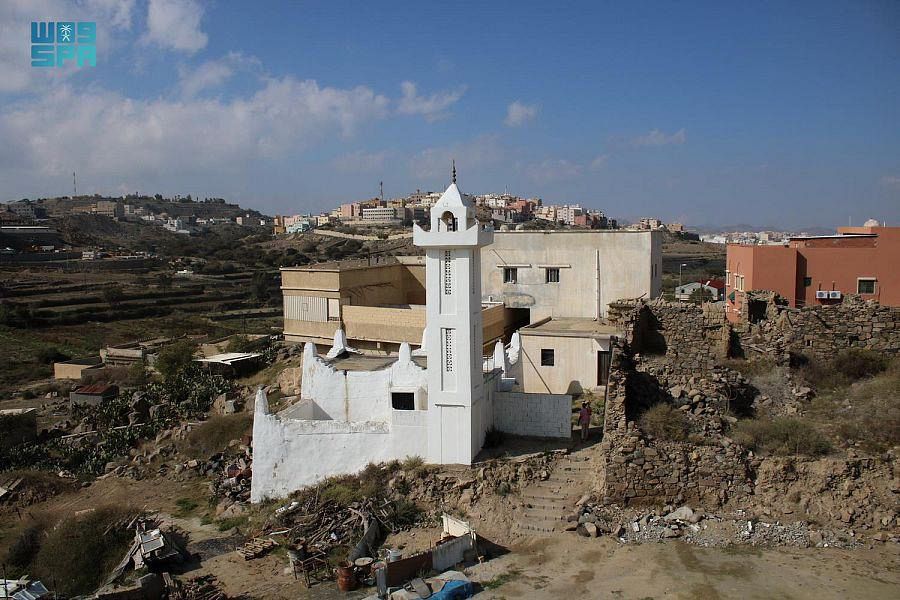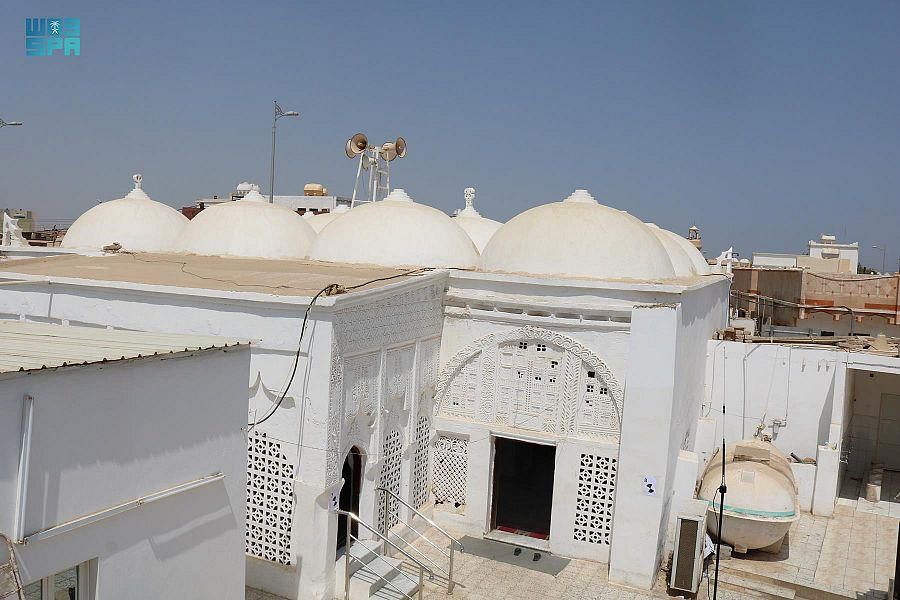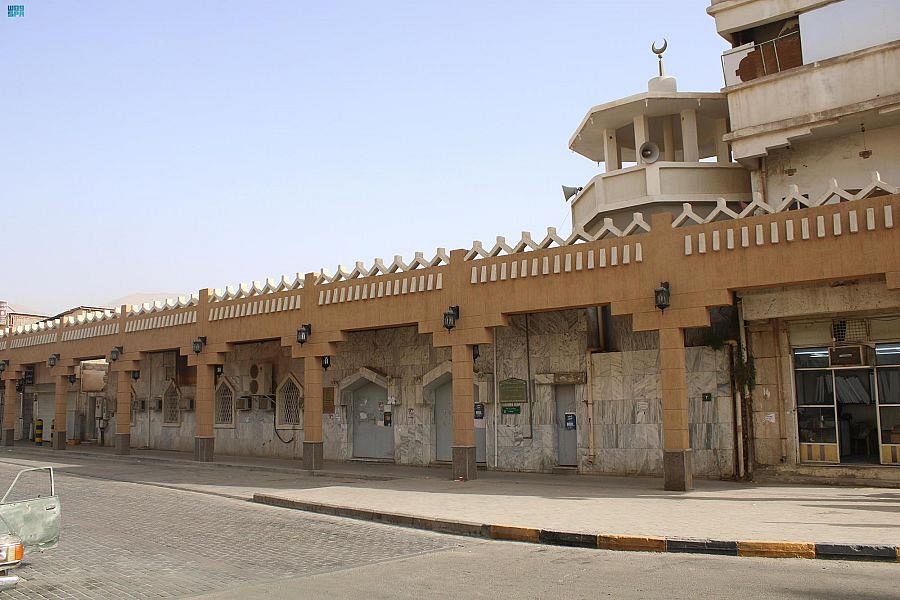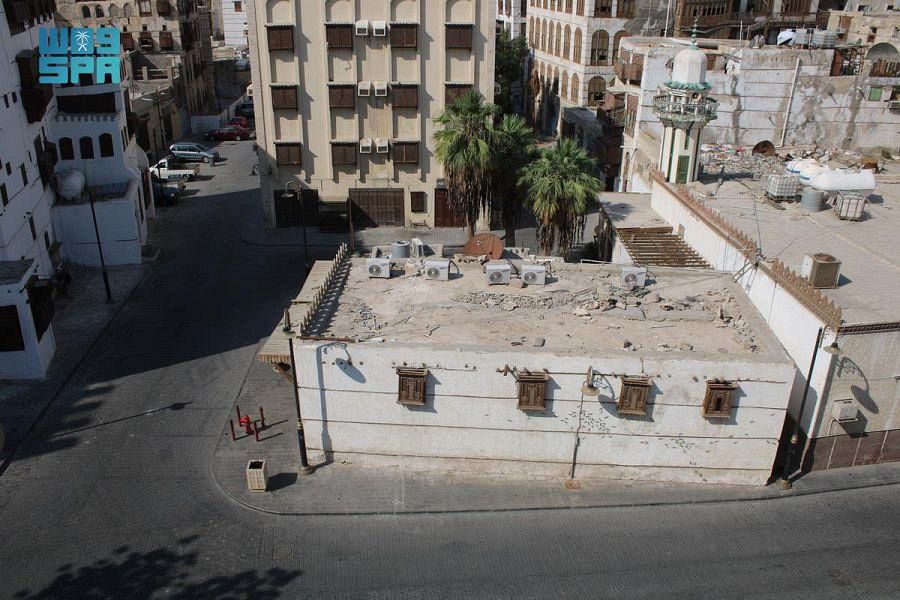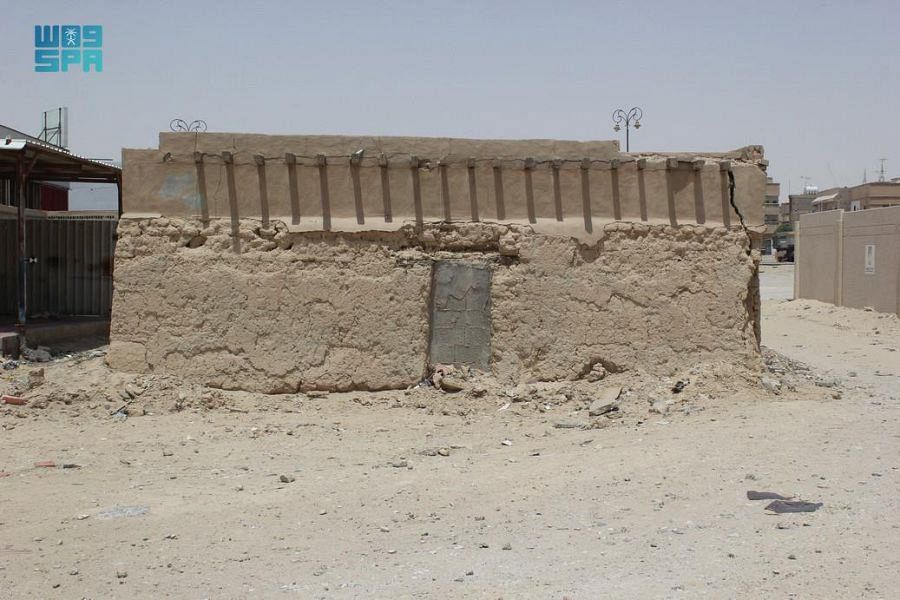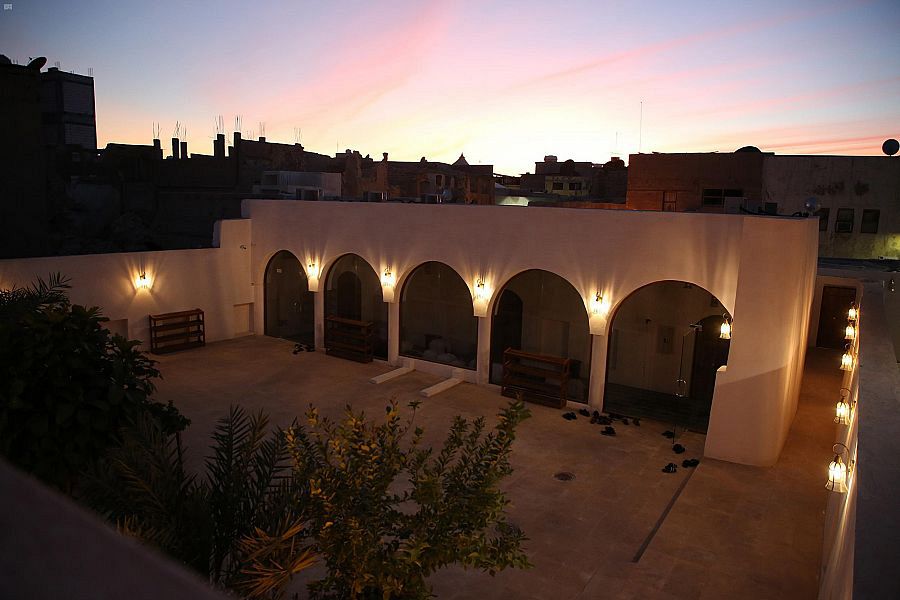
Riyadh, Dec 29, 2019, SPA -- 'Mohammed bin Salman Project for Historical Mosques Renovation' achieved development and rehabilitation of all mosques of the first phase of the project which reached 30 mosques in 10 regions of the Kingdom of Saudi Arabia at a cost of more than SR50 million during 423 days with direction and follow-up by His Royal Highness Prince Mohammed bin Salman bin Abdulaziz Al Saud, the Crown Prince, Deputy Prime Minister and Minister of Defense, within HRH the Crown Prince's direvtive to renovate 130 historical mosques in the Kingdom of Saudi Arabia over several stages.
HRH the Crown Prince's directive sets for the implementation of renovation projects during the first phase by Saudi companies that are experienced and specialized in heritage buildings with the importance of involving Saudi engineers to ensure the preservation of the authentic urban identity of each mosque since its foundation, which was done through the program for the reconstruction of historical mosques at the Ministry of Culture in partnership with the Ministry of Islamic Affairs, Call and Guidance, the General Authority for Tourism and National Heritage and the Saudi Society for the Preservation of Heritage.
The project took into account the small details to recover the basic design of the mosques using new and high quality materials, and added new necessary elements, such as prayer rooms for women, services for people with the disabilities and service facilities and the development of service facilities such as air conditioning, lighting and acoustics, and their implementation in a manner consistent with the mosque's historical identity.
The age of these historical mosques varies between 1432 and 60 years. One of them was established in the era of the Prophet's companion Jarir bin Abdullah Al-Bajali (May Allah Be Pleased with Him), namely Jarir Al-Bajali Mosque in Taif Governorate. Some of these historical mosques were known as a scholarly beacon, such as Sheikh Abu Bakr Mosque which was established more than 300 years ago in Al-Ahsa Governorate.
Since the beginning of the month of Jumada Al-Awwal of the current year 1441H, the mosques renovated under the project's first phase started to receive worshipers after being closed for more than 40 years to start a new stage for these mosques, to become a historical religious symbol that would preserve religious heritage and Islamic architecture and revive heritage villages and the centers of historical cities.
HRH the Crown Prince's support for the historical mosques, which is the largest in history in terms of the number of mosques and the total cost, emanates from the mosques' great position in the Islamic religion, in addition to being one of the most important features of the urban architectural heritage, and for the originality of its architectural character and its importance in highlighting the features of the local architecture of mosques and their diversity in terms of design and building materials in line with the geographical and climatic nature and building materials in various regions of the Kingdom.
The renovation works started with conducting studies, documenting the historical and architectural dimensions of each mosque, reviewing all challenges surrounding these mosques, and maintaining the architectural style that distinguishes each region of the Kingdom of Saudi Arabia which some of them depend on building with stones and others with clay and the use of local wood that characterizes each region.
The renovation process has preserved the architectural character of the mosques in terms of stucco decoration and heritage ceilings and mosque courtyards that were the meeting place of the people of the villages on their occasions and receiving their guests and for consultations in achieving social solidarity and conflict resolution. Moreover, the renovation process focused on restoring sections that have long been distinguished by old mosques, such as the "Khalwah", a term that means an underground pray area or a backend pray area at a certain height that protects the worshipers from cold weather while performing prayers. Reception sites for guests passing through the mosque which are attached to the mosque, as well as ablution places and traditional wells of the mosque were also preserved.
'Mohammed bin Salman Project for Historical Mosques Renovation' will boost interest in developing the villages, heritage cities and the centers of the historical cities in the Kingdom, and the rehabilitation of those mosques for worship and prayer after desertion in the past years, after the Kingdom of Saudi Arabia during the past four decades went through a rapid urban development, one of the effects of which was the trend towards building modern mosques, neglecting most of the historical mosques, and sometimes even demolishing them, building new ones in their place, or leaving historical mosques and moving to other modern mosques, which led to the disappearance of many of them, where many of these mosques are located in heritage villages, most of them deserted, in addition to emphasizing restoring their architectural originality according to their geographical locations data. The project will enhance the preservation of historical mosques and highlight the architectural characteristics in their design and benefit from them in developing the design of modern mosques, especially that most elements of the design of historical mosques coincide with the trend towards sustainability and green architecture. Also, the preservation and development of historical mosques contribute mainly to highlighting the cultural dimension of the Kingdom, which is stressed by Vision 2030.
The mosques that were renovated during the project's first phase are:
Al-Dakhlah Mosque (Sudair, Riyadh); Al-Zarqa Mosque (Tharmada, Riyadh); Al-Twaim Mosque (Al-Twaim, Riyadh); Qasr Al-Sharia Mosque (Hayatham, Riyadh); Al-Mansaf Mosque (Zulfi, Riyadh); Sudirah Mosque (Shaqra, Riyadh); Al-Saderah Mosque (Taif, Makkah); Al-Bajali bin Malik Mosque (Taif, Makkah); Al-Habeish Mosque (Hofuf, Eastern Region); Abu Bakr Mosque (Hofuf, Eastern Region); Al-Saro Village Mosque (Al-Saro, Asir); Al-Nassab Mosque (Abha, Asir); Sadr Aed Mosque (Namas, Asir); Al Akasah Mosque (Namas, Asir); Al-Mudhafah Mosque (Balsamer, Asir); Al-Ajlan Mosque (Buraidah, Qassim); Mohammed Al-Muqbel Mosque (Buraidah, Qassim); Al-Barqaa Mosque (Asiah, Qassim); The Old Mosque (Oqlat Alsqoor, Qassim); Al-Atawlah Heritage Mosque (Atawlah, Baha); Al-Dhafeer Heritage Mosque (Baha); Al-Malad Heritage Village Mosque (Mald, Baha); Taboot Mosque (Farsan Island, Jazan); Al-Maghaydhah Mosque (Hail); Qafar Mosque (Hail); Al-Jalud Mosque (Sumaira, Hail); Al-Rahebeen Mosque (Sakaka, Jouf); Al-Haditha Mosque (Haditha, Jouf); Al-Issawiya Mosque (Issawiya, Jouf); and Abu Bakr Mosque (Thar, Najran).
--SPA
14:05 LOCAL TIME 11:05 GMT
0007
www.spa.gov.sa/w1240344




